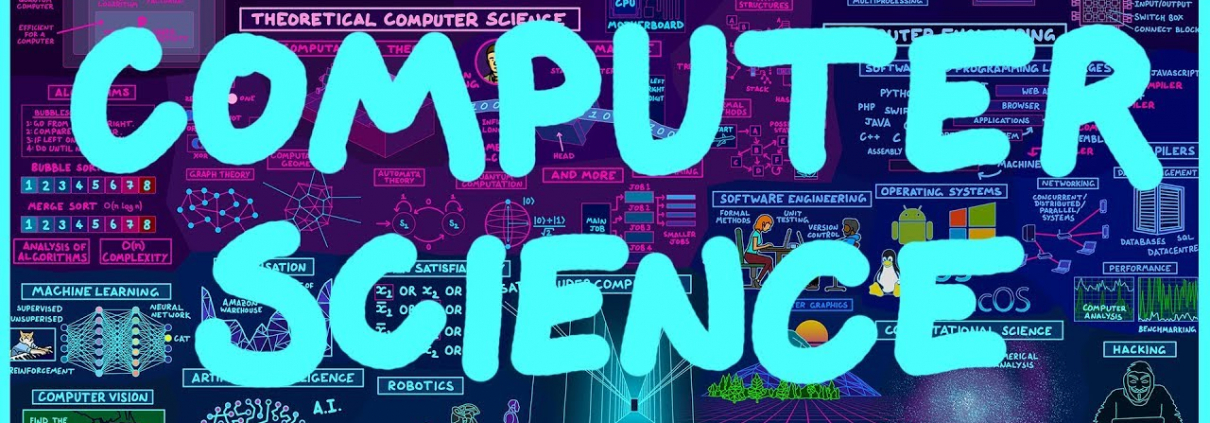Introduction to Computer Science: Unveiling the Digital Universe
In the modern age of technological marvels, computer science stands as the cornerstone of innovation and progress. It’s the driving force behind the seamless interplay of hardware and software that has transformed every facet of our lives, from communication to commerce, entertainment to education. This article embarks on a journey to demystify the realm of computer science, unveiling its core concepts, historical roots, and profound impacts on our world.
The Essence of Computer Science
At its essence, computer science is the systematic study of algorithms, data structures, and the principles that govern the design and function of computers. It’s a multidisciplinary field that encompasses theoretical foundations, practical applications, and everything in between. Computer scientists are the architects of the digital universe, crafting the tools and techniques that power the devices and software we use daily.
Historical Evolution
The roots of computer science can be traced back to ancient times when humans devised ingenious mechanisms for calculations and data manipulation. However, it wasn’t until the 20th century that the foundational concepts of modern computer science began to take shape.
The Birth of Computing Machines
The invention of mechanical calculators in the 17th century marked the first steps towards automated computation. Charles Babbage’s designs for the Analytical Engine in the 19th century laid the groundwork for modern computers, even though the technology of the time couldn’t realize his vision.
Turing and the Birth of Theoretical Computer Science
The turning point came in the 20th century with Alan Turing’s seminal work on computability and the Turing machine. His ideas formed the basis of theoretical computer science, which seeks to understand the limits and capabilities of computation. Turing’s contributions also played a pivotal role in breaking the German Enigma code during World War II, showcasing the real-world impact of computational thinking.
The Digital Revolution
The mid-20th century witnessed the advent of digital computers. The Electronic Numerical Integrator and Computer (ENIAC), developed in the 1940s, was one of the earliest programmable computers. Its creation marked the dawn of practical computer science, leading to rapid advancements in hardware, software, and networking technologies.
Core Concepts of Computer Science
Algorithms and Data Structures
Algorithms are step-by-step instructions for solving problems, while data structures are ways to organize and store data efficiently. They form the heart of computer science, determining how information is processed and manipulated by software.
Programming Languages
Programming languages serve as the bridge between human ideas and machine execution. They allow programmers to communicate with computers, providing instructions through syntax and semantics. Languages like Python, Java, and C++ are the building blocks of software development.
Computer Architecture and Organization
Computer architecture delves into the design of hardware components that make up a computer system, including processors, memory, and input/output devices. Computer organization focuses on how these components interact to execute programs effectively.
Theory of Computation
This theoretical branch explores the fundamental questions of what can and cannot be computed. It includes automata theory, formal languages, and complexity theory, helping us understand the theoretical limits of computation.
Artificial Intelligence and Machine Learning
Artificial Intelligence (AI) and Machine Learning (ML) are cutting-edge fields within computer science. AI involves creating machines that can simulate human intelligence, while ML focuses on developing algorithms that enable computers to learn from data and improve their performance over time.
Real-World Impact
The influence of computer science on our lives is immeasurable. From the convenience of smartphones and the power of search engines to medical imaging and space exploration, computer science has revolutionized industries across the globe.
Communication and Connectivity
The internet, a product of computer science, has redefined how we communicate, access information, and conduct business. Social media platforms, email, and video conferencing are just a few examples of how technology has brought people closer together.
Healthcare and Medicine
Computer science plays a vital role in medical diagnostics, imaging, and drug discovery. Advanced algorithms analyze medical images, identify patterns in patient data, and simulate drug interactions to accelerate research and improve patient outcomes.
Entertainment and Gaming
The entertainment industry thrives on computer science innovations. Video games, virtual reality experiences, and streaming platforms all rely on intricate algorithms and cutting-edge hardware to create immersive and engaging user experiences.
Environmental Sustainability
Computer science is also contributing to environmental conservation. Through simulations and data analysis, researchers can model environmental changes, track animal populations, and optimize resource management strategies to minimize ecological impact.
Conclusion
In an era where technology is seamlessly woven into the fabric of daily life, computer science stands as the guiding force behind these transformative changes. From its humble origins in mechanical calculators to the sophisticated algorithms of AI, computer science continues to shape the world around us. As we gaze toward the future, the role of computer science in innovation, problem-solving, and progress is set to expand even further, ensuring that the digital universe remains a realm of endless possibilities.





